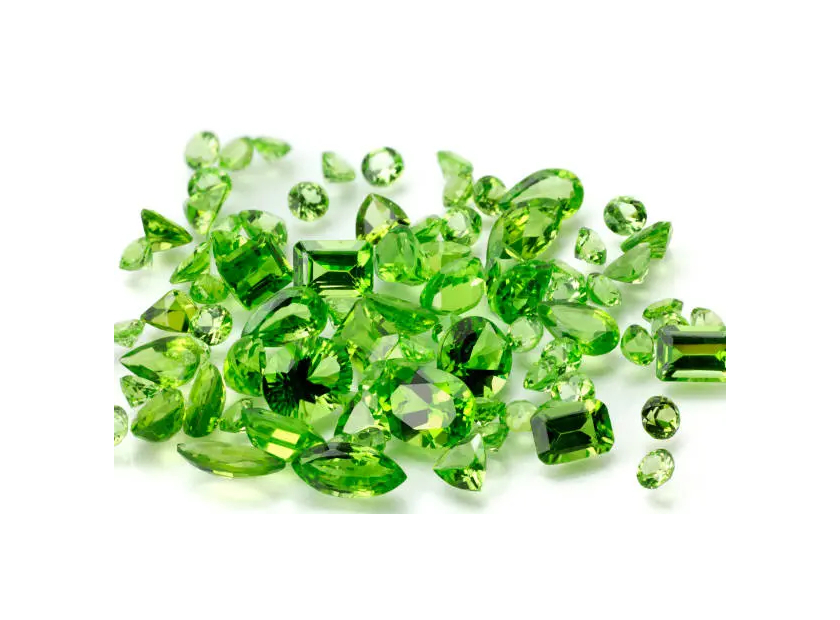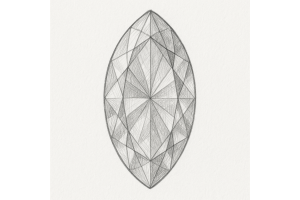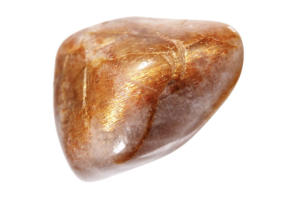GBP
/
GBP
/
Shipping to:
Currency:
Sphene vs Peridot: What’s the Real Difference Between These Green Gems?
When it comes to green gemstones, two names often come up: Sphene and Peridot.
While they might appear similar at first glance, these gems have distinct characteristics that set them apart.
Whether you're a collector, jeweller, or simply a gemstone enthusiast, understanding these differences can help you make informed choices.
Understanding Sphene
Sphene, also known as Titanite, is a rare calcium titanium silicate mineral.
The name 'Sphene' is derived from the Greek word for 'wedge', reflecting the typical shape of its crystals.
This gemstone is celebrated for its exceptional dispersion, or 'fire', which surpasses even that of diamonds.
This means that when light enters the stone, it's broken down into a dazzling array of spectral colours, giving Sphene a remarkable brilliance.
However, it's worth noting that Sphene has a Mohs hardness of about 5 to 5.5, making it relatively soft compared to other gemstones.
This softness means it requires careful handling and is less suited for everyday jewellery pieces. For those looking for more durable gemstone options, check out gemstone engagement rings that are better suited for daily wear.
Getting to Know Peridot
Peridot is a gem-quality variety of the mineral olivine.
It's one of the few gemstones that occur in only one colour: a vibrant olive-green.
The intensity of its green hue depends on the amount of iron present in its structure.
Peridot has a rich history, having been used in jewellery for thousands of years.
It's also the birthstone for August, adding to its popularity.
With a Mohs hardness of 6.5 to 7, Peridot is more durable than Sphene, making it more suitable for various types of jewellery, including rings and bracelets. If you're looking for gemstone rings, consider checking out our gemstone ring collection.
Distinguishing Between Sphene and Peridot
Colour:
While both gemstones exhibit green hues, Sphene's colour can range from yellow-green to brownish tones, whereas Peridot typically showcases a consistent olive-green shade.
Brilliance and Fire:
Sphene is renowned for its exceptional dispersion, displaying a vivid play of colours under light.
In contrast, Peridot has a more subdued, vitreous lustre without the pronounced 'fire' seen in Sphene.
Hardness and Durability:
Peridot's higher hardness (6.5–7) makes it more resistant to scratches and suitable for daily wear.
Sphene's lower hardness (5–5.5) means it's more prone to scratches and requires more cautious handling.
Clarity and Inclusions:
Sphene often contains inclusions, which can affect its transparency and overall appearance.
Peridot is generally clearer, though it can have characteristic 'lily pad' inclusions.
Cutting Challenges:
Due to its brittleness and cleavage properties, Sphene is more challenging to cut and shape, often resulting in smaller finished gemstones.
Peridot, being more robust, allows for a wider variety of cuts and larger sizes.
If you're interested in exploring different types of cuts and settings for your gemstone jewellery, you can check out non-traditional engagement rings.
Making the Right Choice
Purpose:
If you're seeking a unique piece with exceptional fire for occasional wear, Sphene could be a captivating choice.
However, for everyday jewellery that's more durable, Peridot might be more appropriate.
Aesthetic Preference:
If you appreciate a gemstone with a dynamic play of colours, Sphene's dispersion offers that unique appeal.
For a consistent and classic green hue, Peridot stands out.
Budget:
Sphene's rarity and unique properties can make it more expensive and harder to find.
Peridot is generally more affordable and readily available.
If you're interested in learning more about how gemstones are formed and the differences between them, check out this informative blog post.
FAQs
Is Sphene rarer than Peridot?
Yes, Sphene is considered rarer than Peridot, especially in gem-quality forms suitable for jewellery.
Can Sphene be used in engagement rings?
Due to its lower hardness and brittleness, Sphene is not typically recommended for engagement rings or other jewellery subject to daily wear. However, you can explore other options by browsing gemstone engagement rings.
How do I care for my Peridot jewellery?
Peridot should be cleaned with mild soapy water and a soft brush.
It's advisable to avoid ultrasonic and steam cleaners, as well as exposure to sudden temperature changes.
Are there synthetic versions of these gemstones?
Synthetic Sphene is uncommon, while synthetic Peridot exists but is not widely available.
Always purchase gemstones from reputable dealers to ensure authenticity.








